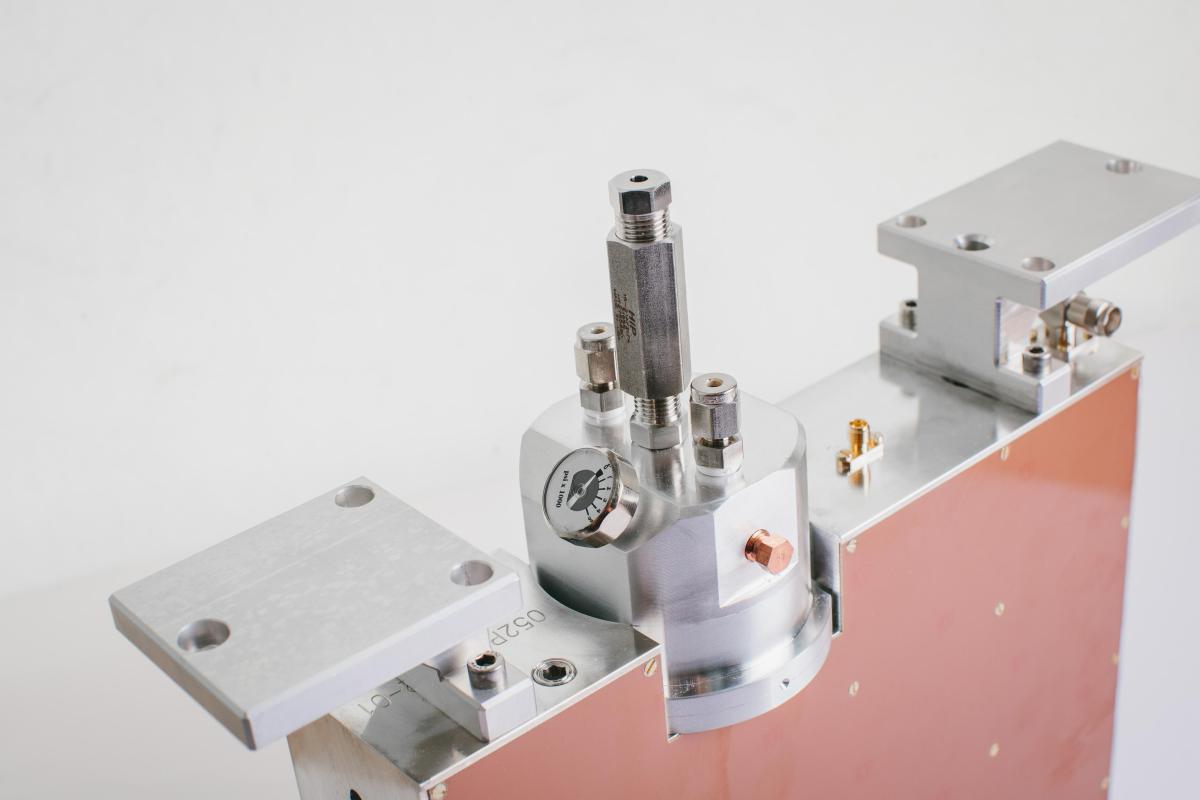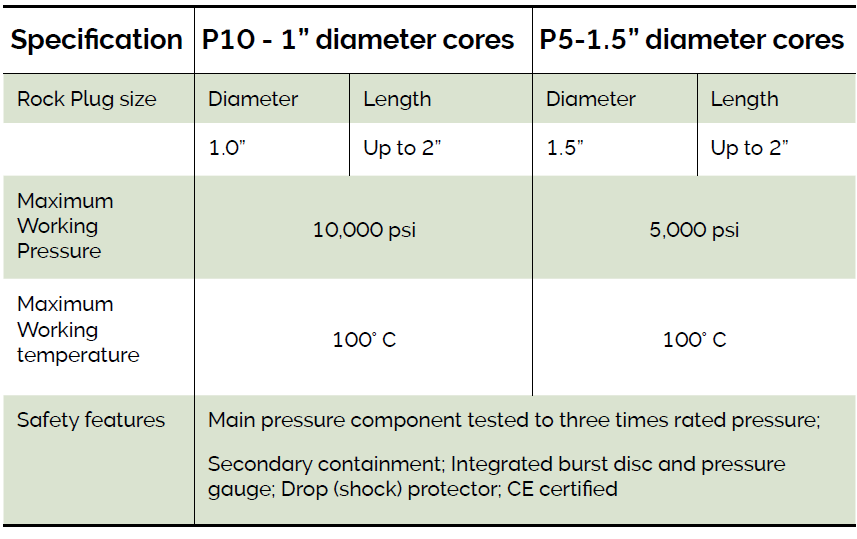Products
Applications
Learning
 Part of the Oxford Instruments Group
Part of the Oxford Instruments Group
Nowadays, NMR measurements are made routinely in core analysis labs all around the world. In addition to these routine measurements, many users want to expand their NMR capabilities to include core flooding experiments and measurements at reservoir conditions.
Our P5 and P10 cells are designed specifically for the GeoSpec range, to offer these capabilities with the best possible compatibility and performance.
The P5 and P10 cells allow core samples to be loaded into the cells and pressurised with the cell held in its purpose-built stand outside the NMR instrument. In this way core samples can be allowed to equilibrate at pressure while the NMR instrument is used for measuring other non-pressurised samples. Given that some samples could take many days to equilibrate at pressure, this can be a significant advantage of the P5 and P10 cells.
In order to guarantee the best signal to noise (SNR) performance from an NMR measurement, the core sample should be as close-fitting as possible inside the RF coil of the probe. P5 and P10 cells use a specially-designed ceramic pressure vessel that guarantees the minimum separation between the RF coil and the sample. Furthermore, P5 and P10 cells incorporate our Q-Sense technology for delivering short echo spacings along with high SNR. We have also taken great care in the choice of materials used in the cells in order to minimise any background signals and
so maximise sensitivity.

All P5 and P10 cells are enclosed in a metal shield so that, in the unlikely event of a pressure vessel failure, any broken parts are captured safely and cannot cause injury to operators. This is especially important when pressuring a cell outside the GeoSpec as the cell is not shielded by the magnet and its case. In addition, all cells are fitted with a burst disc designed to operate if the pressure in the cell inadvertently exceeds the safe maximum.
Please see the table below for available configurations of GeoSpec and overburden cells.

